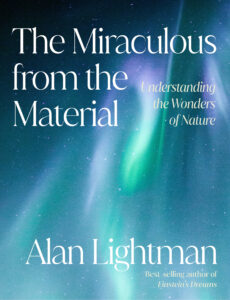 subtitled: Understanding the Wonders of Nature
subtitled: Understanding the Wonders of Nature
Ah, what a refreshing collection of essays for the intermediate scientist on the many wonderful things around us! I would say that it helps to have a knowledge of basic science before diving in, but if this book with its beautiful selection of photos and plainly stated appreciation for the beauty and magic of the everyday world encourages people to learn more about science, then so much the better!
Ofc, certain of the phenomena described here are easier to encounter than others. Birds and lightning are nearly worldwide occurrences, whereas Ha Long Bay and Yosemite Firefall are entirely site-specific. But Alan Lightman goes into the science behind all these wonders of nature with the same enthusiasm and appreciation for their beauty and ability to inspire. While he is certainly no believer in miracles, he does believe in the human experience of the miraculous, and is happy to explain the scientific processes behind these evocative experiences.
Which isn’t to say that he’s at all a killjoy! What’s most palpable throughout this book is how, as the absolute inverse of a cult leader, he is more than happy to explain why things naturally occur and how we’re able to observe them. Some of the explanations get a bit too technical even for me, even as some others seem weirdly underbaked — why, for example, the seemingly arbitrary angle chosen from which to view rainbows? That said, I learned quite a bit. I hadn’t known, for example, that spider webs were capable of jumping out at prey! Dr Lightman explains why with both relish and panache.
There were a few quibbles I had with the text as written that I’m hoping didn’t survive the editorial process, that I only mention because I feel that books on science need to be more rigorously critiqued than their counterparts. One is just a matter of style, namely the awkward and unexplained decision to occasionally use the word “H-bird” to refer to hummingbirds. The more serious query I had was in regard to the use of the word “glanular” to describe snow in the section on glaciers. I’m pretty certain that was a typo, but can ascribe no meaning from the substitution of the most common words it might be standing in for (especially since granular would be the exact opposite of the packed snow described in the text, if I’m reading it correctly.)
Overall, this is a fun, inspiring book for people who want to know more about science and the world around us. It is definitely for anyone who enjoys the experience of wonder, and appreciates the beauty of the everyday.
The Miraculous From The Material by Alan Lightman was published November 19 2024 by Pantheon Books and is available from all good booksellers, including
